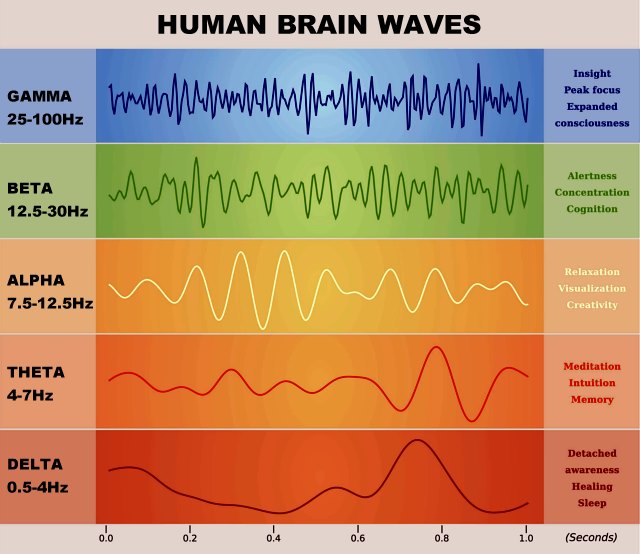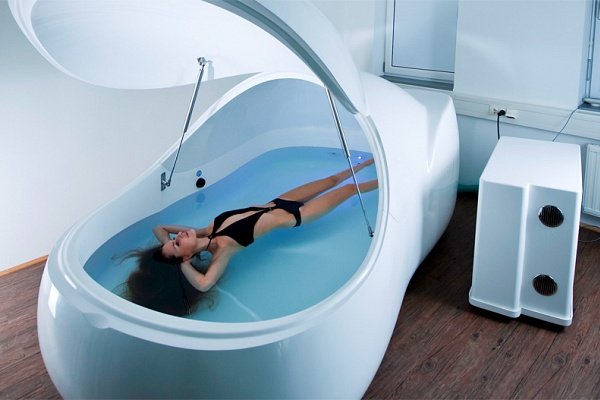27 January 2021, by i-sopod
What’s the connection between floatation and healthy brain function? How can floating in an isolation tank help the brain to function better? Here’s an exploration of how to improve brain function with floatation.
On average, the human brain processes the equivalent of a whopping 11 million bits of information per second. The outside surface of the brain is responsible for our sensory activity; it deals with taking in visual, audio, and tactile information, and transmitting that to the nerves to create a response. Clinical neuropsychologist Dr. Justin Feinstein observed how when you’re in a floatation tank, there’s not a single photon of light entering the brain, nor any sound, and as the body lies in water heated to skin temperature, there is no tactile sensation being processed either. In our daily lives the brain is constantly processing sensory input, and so when in an environment of sensory deprivation, the brain gets a chance to stop all of those processes which are continuously working in the background. This provides an amazing opportunity for the brain to rest and restore, in what is effectively an intervention for the entire nervous system.
Here’s a short clip of Dr Justin Feinstein explaining a little more about floatation’s effects on the brain:
4 Reasons Why Floating Is More Relaxing For The Brain Than Sleeping
You would think that the brain gets the opportunity to switch off and rest each night when we sleep. Floatation is proven to be more restful for the brain than sleep however, improving cognitive function by recharging the brain in a way that sleep doesn’t. It is estimated that one hour spent in a float tank is equal to eight hours of sleep. Why is that?
Here are a few reasons why floatation can be more restful than an average night’s sleep:
- Disrupted Sleep: most of the time we’re sleeping in surroundings where the world around us doesn’t fully switch off – there will be external stimulation in our environment (such as light and noise) that disrupt our sleep and mean we don’t get the deep restoration our mind and body need. While you may still be able to get to sleep, the brain is more sensitive than you think! Even the most minute stimuli from outside is being processed by the brain as you sleep.
- The Impact of Stress: stress can disturb your sleep patterns, cause insomnia, and also alter the quality of sleep. Floatation is proven to help combat stress, reducing cortisol (stress hormone) and increasing prolactin (a hormone which aids sleep).
- Sensory Deprivation: floatation tanks are designed to fully shut out all external stimulation, meaning both mind and body are able to enter a deeper state of relaxation.
- Zero gravity: The tail of the brain connects with the spinal cord, which spends every moment of the day calibrating the body to deal with gravity. The high density of epsom salts in the float tank cause the body to float effortlessly, and the impact of gravity is no longer present. This means that function of the brain is temporarily suspended; a rare pause which is highly beneficial.
Floatation is an opportunity for the brain to enter a deeper state of rest and relaxation than sleep provides. Deep meditation is also known to get the brain to this state, but it can take years of dedication to reach this quality of meditation. Read more about how floatation can be a shortcut to meditation here.
What State Is The Brain In When We Float?
The expression ‘I’ve just had a brainwave’ is actually quite a good clue to better understanding how the brain operates and what the varying states of brain activity are. We say we’ve had a brainwave when we’ve had a bright idea, which is often triggered by the brain actually operating on different brainwaves.
The brain puts out brainwaves, which are signals sent out to communicate with the nervous system, at varying frequencies. The frequency of the waves is determined by what the brain is trying to achieve; higher frequencies are associated with increased productivity and concentration, whereas the lower the frequency, essentially the more relaxed and meditative the state of the brain.
Most of the time we are operating on high frequency Beta brainwaves, which induce a high functioning state: a productive ‘doing mode’ which helps us get stuff done. Too much time spent in Beta, however, does eventually put a strain on the senses. Higher frequency than Beta are Gamma waves, which are put out when the brain is in a deeply concentrated, problem solving mode.
Floatation eases the brain into the slower and calmer frequencies such as Alpha initially, and ultimately Theta, often called the holy grail of floatation. Alpha is the state we achieve when we drift off into our imaginations, connecting more with our senses; an Alpha state soothes anxiety and unlocks creativity.
Theta on the other hand is a deeply healing state in which you are in and out of consciousness. It is often accompanied by clear, creative thinking, moments of insight and inspiration, and sometimes even vivid hallucinations. This is the between-the-veils state we slip into just before falling asleep, just as we’re waking up, and during deep meditation. Activating theta waves can lead to creative exploration and personal growth.

How Does Floatation Improve Cognitive Function?
Dr Peter Suedfield has spent much of his career studying the effects of REST (Restricted Environmental Stimulation Therapies), principally floatation. Here are four cognitive functions proven by Suedfeld’s studies to be improved by floatation:
- Memory function
- Verbal processing
- Creativity
- Musicality (musical talent or sensitivity)
(here’s some more from Dr Suedfeld on REST)
Apart from the benefits of sensory deprivation, what else happens when we float that helps our brains to work better?
1. Vasodilation: ‘Floating promotes vasodilatation, facilitating blood flow to all the parts and systems of the body, including the brain. It creates a whole body healing effect.’ Michael Hutchinson, The Book of Floating.
2. As blood flow increases around the body, all major organs including the brain receive more oxygen, triggering optimised functionality. This is why the risk and symptoms of many diseases, such as congestive heart failure and hypertension, are alleviated.
3. As the brain receives more oxygen it releases more endorphins (the happy chemicals), which relieve pain and stress.
4. Regular float sessions essentially train the ‘endorphin muscle’, rewiring the brain to secrete endorphins more frequently, causing a more consistent state of happiness and relaxation, and sustained levels of positive energy.
Floatation is therefore a fast track ticket to not only alleviate physical ailments, but also to trigger heightened brain activity, more profound relaxation, and improved quality of sleep. Regular float sessions induce a sustained release of endorphins which reduces stress, allowing the brain to function better. What’s more, giving the brain this precious time to rest better than it does during a night’s sleep is rejuvenating, and a rested brain means all round improvement in cognitive function.






